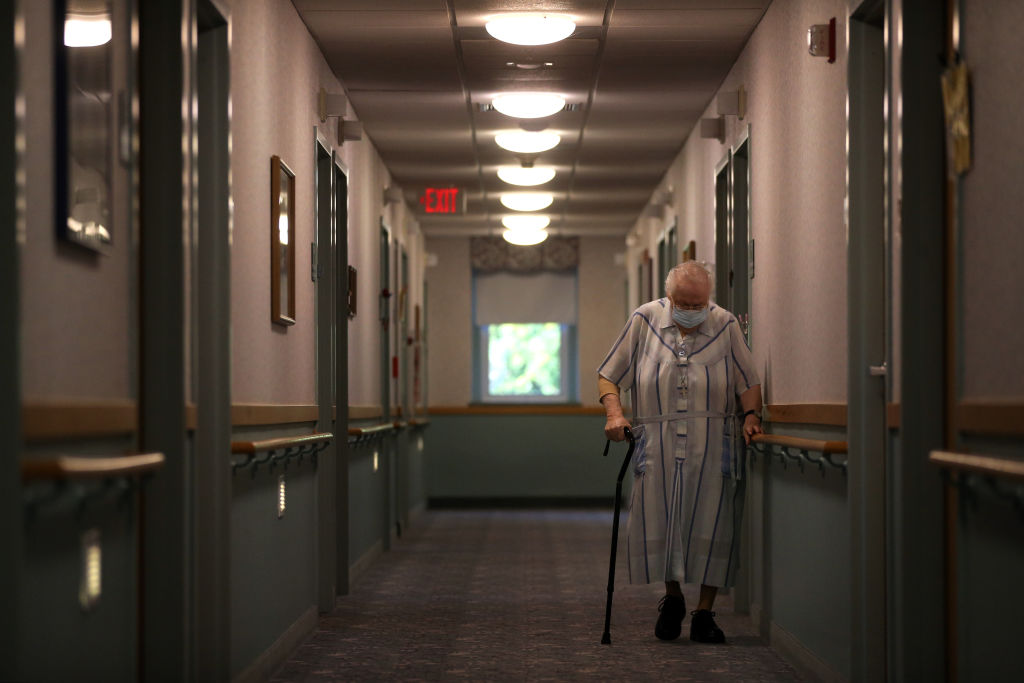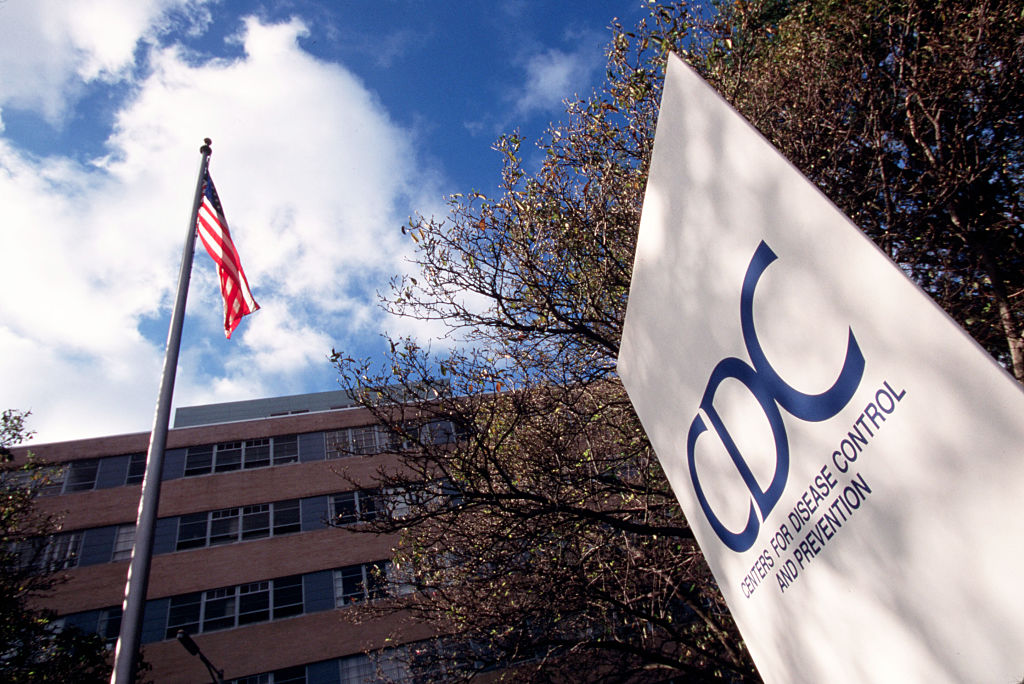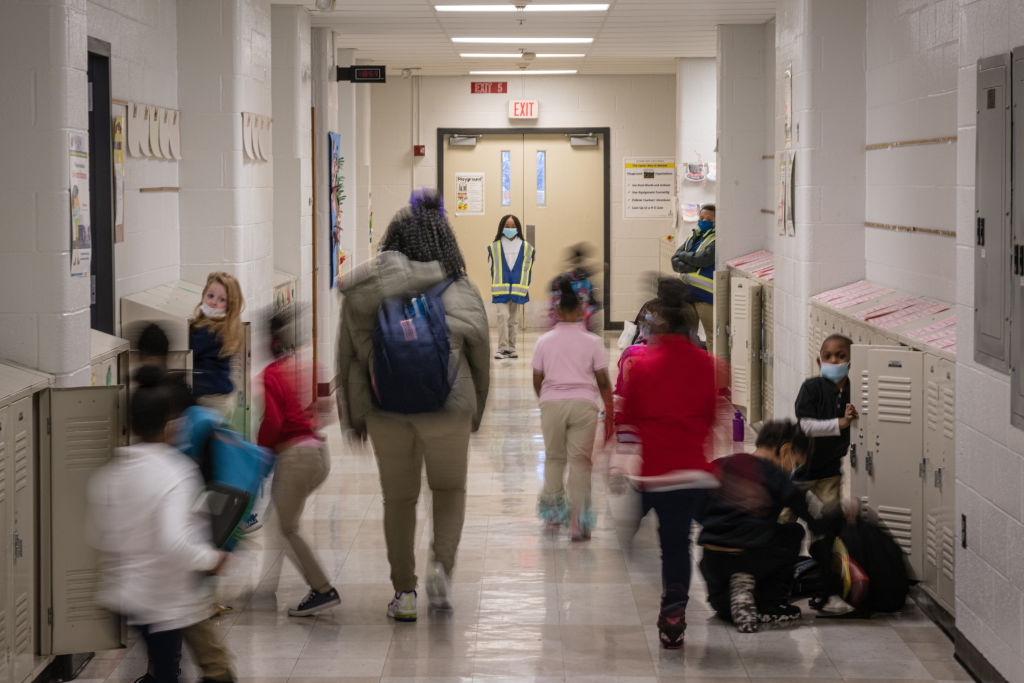For the hundreds of young cheerleaders gathered at the Marriott at Penn Square in downtown Lancaster, Pennsylvania, over the President’s Day weekend, the pandemic was just so yesterday.
All 400-plus rooms in the hotel were sold out on Saturday night. The lobby was a hive of humanity buzzing throughout the day with the excitement of kids and parents in town for a major competition.
The sign in the lobby politely suggested face coverings “in all public areas.” Let’s put it this way. No one in the throng was cheering, “Gimme an M… gimme an A… Gimme an S…”
Cheerleading wasn’t the only game in my hometown. A local sports complex hosted a national indoor field hockey tournament for girls under 14. Then there were the hordes of families from up and down the Eastern seaboard who decided that a long weekend was the perfect time to climb into the SUV and pay a visit to Pennsylvania Dutch country. Hotel rooms were as scarce as hen’s teeth, as any Lancaster County chicken farmer could have told you.
The pandemic does appear to be on the wane, for now. “Omicron is starting to run out of people to infect,” infectious disease specialist Dr. Thomas Russo told the AP.
Let the pictures tell the story. The current graph of new COVID-19 cases looks like the Alpine downhill in the Winter Olympics, cascading from 800,000 in mid-January to less than 80,000 this week..
Daily deaths have slalomed this way and that and, once again, taken a downturn, from 2,500 to 1,600 since Groundhog Day. The number of people currently hospitalized with COVID-19 has dropped as well, from a peak of 146,000 the week of January 14-20 to less than 60,000 the week of February 14-20. By comparison, the 2021 peak was 124,000 in January and the low was 12,000 in late June-early July.
As much as we would love to put the coronavirus in the rear-view mirror, the wreckage lingers. Last Friday, the Centers for Disease Control and Prevention reported a pandemic-era increase in emergency department visits for mental health issues among girls ages 12 to 17. Eating disorders and tic disorders are high on the list. This news follows closely on the Surgeon General’s urgent call for action on the mental health crisis among the young, which was brewing and building for decades and has now surged in these troubled pandemic times.
With millions still unprotected from COVID-19 (18 million children under 5 years of age who are too young to be vaccinated) and millions more vulnerable (people with weakened or compromised immune systems), the vaccination effort cannot afford to let up. A status report:
• 253 million in the U.S. have received at least one COVID-19 shot, representing 76% of the country’s population and 81% of the vaccine-eligible age 5 and up.
• 215 million are fully vaccinated (sans boosters). That’s 64.8% of the population and 68.8% of the vaccine-eligible.
• 93.2 million have received a booster shot, including 46.7% of fully vaccinated adults. Another 85.5 million are booster-eligible.
In this week’s countdown, we search for signs of a coming spring thaw. We begin by looking west.
10. Report from California
Governor Gavin Newsom has unveiled a strategy for living with the virus in the next phase of the state’s COVID-19 response. The pillars of the 30-page SMARTER plan are Shots, Masks, Awareness, Readiness, Testing, Education and Rx (treatments). Among other strategies, California will implement a vaccination requirement for school students after the Food and Drug Administration grants full approval to COVID-19 vaccines for pediatric age groups.
The plan does not include a victory lap over the coronavirus – because, as it states, “COVID-19 isn’t going away.” Instead, it emphasizes preparedness for future surges and new variants based on everything learned from the sobering experience of the past two years.

9. Report from the nursing home
At the end of January, COVID-19 vaccination rates of nursing home staff – long a laggard in the vaccination campaign – averaged 84% nationally, ranging from 70% in Ohio to 99% in Maine, Massachusetts, Rhode Island and New York, the Kaiser Family Foundation reports.
Booster rates averaged 28% and ranged from 17% (Mississippi, Missouri, Louisiana) to 56% (Hawaii, California). The federal vaccination mandate for healthcare workers has different compliance dates in different states, thanks to a chopped salad of court suits and rulings.
The Los Angeles Jewish Home managed to vaccinate 97% of staff by emphasizing the importance of protecting lives in the community and appealing to employees’ “personal values of providing service to those in need,” Kimberly Bonvissuto reports in McKnight’s Senior Living. More than 80% of staff have also had their booster shot.
What about staff who have an exemption and remain unvaccinated? In McKnight’s Long-Term Care News, Danielle Brown outlines precautions recommended by Medicare and Medicaid. These include assigning unvaccinated workers to non-patient care areas, limiting contact with residents, having them do remote work when possible, conducting more frequent testing and adopting infection control protocols that go beyond federal standards.
8. Report from the maternity ward
Two doses of mRNA COVID-19 vaccine during pregnancy are 61% effective in preventing COVID-19 hospitalizations in infants younger than 6 months of age, a CDC study notes. Protection was 80% when vaccination took place later in the pregnancy, from 21 weeks’ gestation until 14 days before delivery.
In this study, 84% of infants hospitalized for COVID-19 and 88% of those treated in the ICU were born to mothers who had not been vaccinated. One infant born to an unvaccinated mother died of COVID-19.
The message remains consistent: COVID-19 has dire consequences for mother and child throughout and beyond pregnancy, and vaccination confers multiple benefits for both. Nonetheless, rates of COVID-19 vaccination before or during a pregnancy remain low.
7. Report from the ICU
Patients who need intensive care for COVID-19 tend to be the unvaccinated, or the vaccinated but not boosted, or people with weakened immune systems who are exquisitely vulnerable to the virus.
With that measure of risk in mind, the U.K. will be rolling out a second booster dose this spring for seniors 75 and older, immunocompromised people 12 and older and residents of care homes for older adults. GP says the spring booster will come six months after the last shot and yet another may be scheduled for the fall. Stay tuned for word on additional boosters in the U.S.
In a study of fully vaccinated people (without boosters) who died of COVID-19, 78% had four or more risk factors. Those included age over 65, immunosuppression, diabetes, neurologic disorders or chronic disease of the heart, lungs, liver or kidneys. The overall risk of death was low: Among 1.2 million vaccinated persons, 2,246 developed COVID-19 and 189 had a severe outcome, including 36 who died.

6. Please listen closely as our menu options are changing
The CDC has promised to move away from basing its COVID-19 guidance on the number of cases and rates of community transmission and toward reliance on hospitalizations as a measure of local disease severity. CDC Director Dr. Rochelle Walensky said recommendations would also take into account “the tools we now have at our disposal – such as vaccines, boosters, tests and treatments – and our latest understanding of the disease.”
It’s never too late to get the messaging right. According to the Pew Research Center, 60% of adults say they have felt confused by changes in public health recommendations over the past couple of years. Opinion is split between those who think public health officials are doing a good to excellent job in responding to the pandemic (50%) and those who rate the performance as only fair or poor (49%). The numbers are exactly the same for local elected officials, lower for state elected officials (46% good to excellent, 53% fair to poor), worse for President Biden (40% and 60%, respectively) and positively glowing for local hospitals and medical centers (81% and 19%).
5. Our treatment options are changing, too
The FDA has added another five-syllable monoclonal antibody, bebtelovimab, to the stockpile for treating mild to moderate COVID-19 at risk of progressing to severe disease. That’s the same clinical niche carved out for other monoclonals. The drug shows activity against Omicron and is for outpatient use only. Brian Park has the pertinent data in MPR.
A monoclonal combo that has been around for a while, casirivimab and imdevimab, helped ward off symptoms in people with asymptomatic SARS-CoV-2 infection living in the same household with a symptomatic infected person. Bradley van Paridon shares details in Infectious Disease Advisor.
4. It’s not a COVID week without a COVID lawsuit
The Lone Star State of Texas is suing the federal government over its mask mandate for airline travel and other public transportation.
The mask mandate, in effect until March 18, isn’t deterring travel. The number of people moving through security checkpoints at U.S. airports – 2 million each on Saturday and Sunday – was double the number on the same date in 2021 and comparable to the pre-pandemic levels of February 2019 and 2020.
Related: The COVID Comfort Index, compiled by the good folks at Pittsburgh polling firm CivicScience, finds that 50% of us are ready to travel now, up from 40% just one month ago.

3. Report from K-12
Vaccination rates among children and adolescents inch forward. In children ages 5 to 11, 32% have had at least one shot and 24% are fully vaccinated. In adolescents ages 12 to 17, 67% have had a shot and 57% are fully vaccinated. Approval of vaccines for kids under 5 awaits further data from clinical trials.
Surgeon General Vivek Murthy, his wife, four-year-old daughter and five-year-old son have all tested positive for COVID-19. The daughter, first to be diagnosed, is coping with congestion and hoarseness from coughing. Mom, dad and brother have mild symptoms. Dr. Murthy has been tweeting updates and observations: “Many people assume you must have been careless to get sick. Our safety measures reduce risk but they can’t eliminate risk. Nothing can.”
Disneyland and Disney World have made face coverings optional for the fully vaccinated. Proof of vaccination is not required for admission to the theme parks, but the unvaccinated are expected to cover up voluntarily at indoor facilities. Face coverings are required for everyone 2 and older, vaccinated or not, on Disney monorails, buses and other enclosed transportation. It’s a small world after all. Just don’t do anything Goofy.
Australia is the first country to authorize Moderna’s COVID-19 vaccine for children 6 to 11 years of age. The U.K. has approved vaccination of children 5 to 11 (with the Pfizer/BioNTech vaccine) while cautioning that the effort must not displace or disrupt the regular childhood immunization schedule, Emma Bower reports in GP.
2. Report from the world
The U.S. is stepping up its efforts to support global COVID-19 immunization by assisting 11 countries in sub-Saharan Africa, the Washington Post reports. The help will include setting up mobile vaccination clinics and providing freezers for safe storage.
A global effort to allow African countries to manufacture their own mRNA vaccines has taken its first big step, selecting six countries – including South Africa, where Omicron first emerged – to receive the necessary technology.
1. Where is “normal” and how far away is it?
More than a dozen pediatric, infectious disease and emergency medicine doctors have united in an organization called the Urgency of Normal and more than 1,200 colleagues have signed on in support. The group is calling for a return to 2019 norms for school classrooms, athletics and extracurricular activities. Their toolkit describes COVID-19 as having “a flu-like risk” for unvaccinated children and says that “vaccinated children have almost no risk of serious disease.”
Several big cities have lifted proof of vaccination requirements for local businesses, including Boston, Philadelphia, Washington, D.C., Minneapolis-St. Paul and Seattle, though individual businesses may retain their own standards.
Mardi Gras is on for next Tuesday. Actually, the krewes in New Orleans have been busy parading since early January.
As state mask mandates fall by the wayside, governors are deferring to the decisions of local officials, who regard it as a blessing and a curse. As the Boston Globe reports, “Local health department directors and board members say they’re being bombarded with increasingly ugly outbursts during public meetings, as well as nasty emails and threatening phone calls. Several have quit.”
Hostility and vitriol, like that spewed by airline passengers in close quarters at 36,000 feet, is in no way normal or acceptable. The New York Times explains “How defiant Covid-era customers turned a dream job – flight attendant – into a total nightmare.”
Prime Minister Boris Johnson announced an end to all COVID restrictions in the U.K. just one day after the 95-year-old Queen tested positive for the virus.
Parting shot
The road to normal is opening up and is certainly paved with good intentions, but will not be without its bumps and curves.
Ironically, it’s the unvaccinated who feel more comfortable being out and about. In the Pew survey, conducted in the last week of January, 62% of the unvaccinated were okay – what, me worry? – going to an indoor sporting event or concert, while only 37% of the vaccinated felt that way.
Overall, most of us are feeling more adventurous in seeking the normalcy we miss. Surveys by Kaiser, Harris, Gallup, Pew, CivicScience and others confirm as much. Or you can do your own research and check out the cheerleader competition nearest you.
…and some songs
Be True to Your School, The Beach Boys
“We all share the same goal: To get to a point where COVID-19 is no longer disrupting our daily lives; a time when it won’t be a constant crisis, rather something we can prevent, protect against, and treat.” – CDC Director Dr. Rochelle Walensky
Take care. Stay well. We care.








